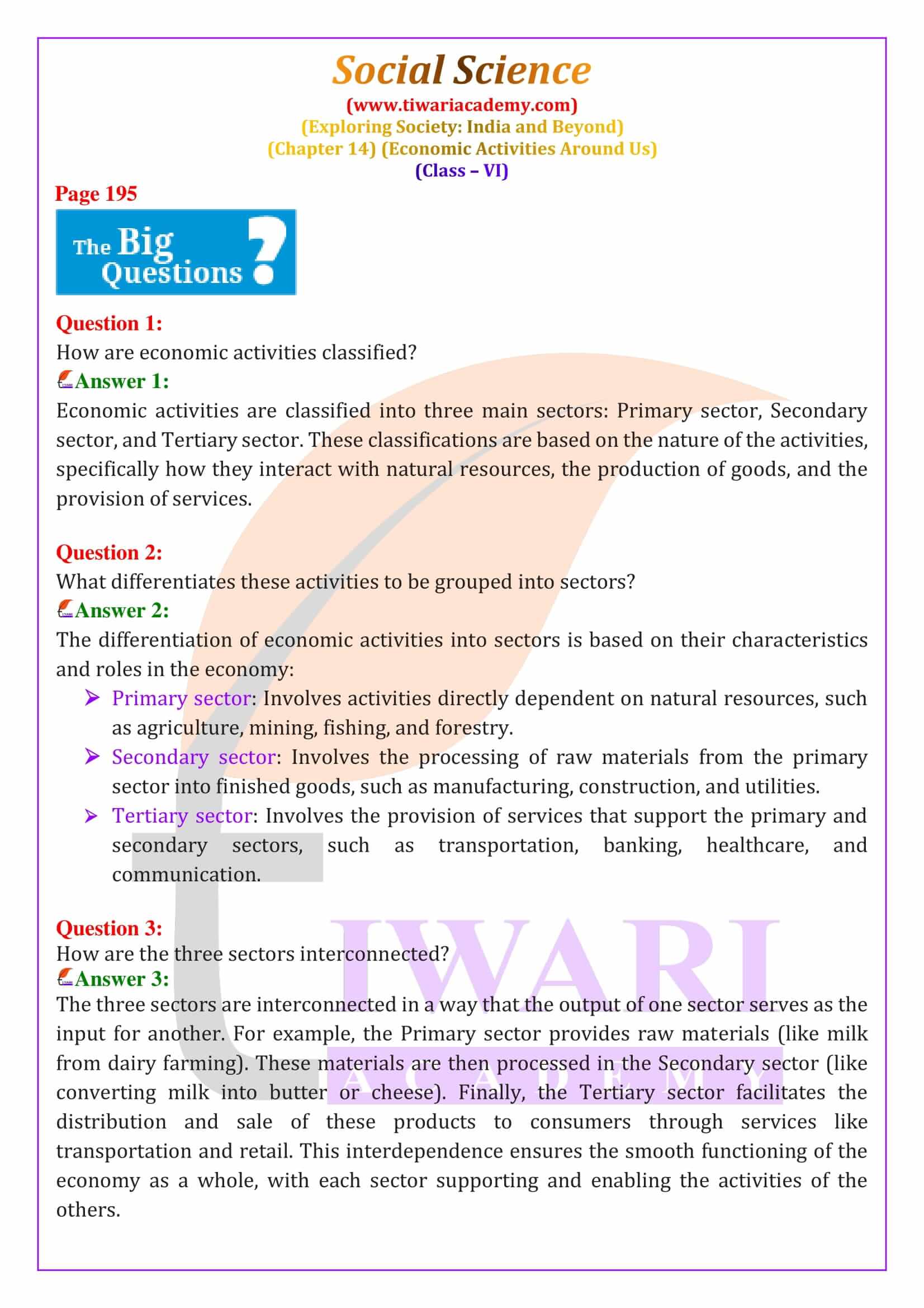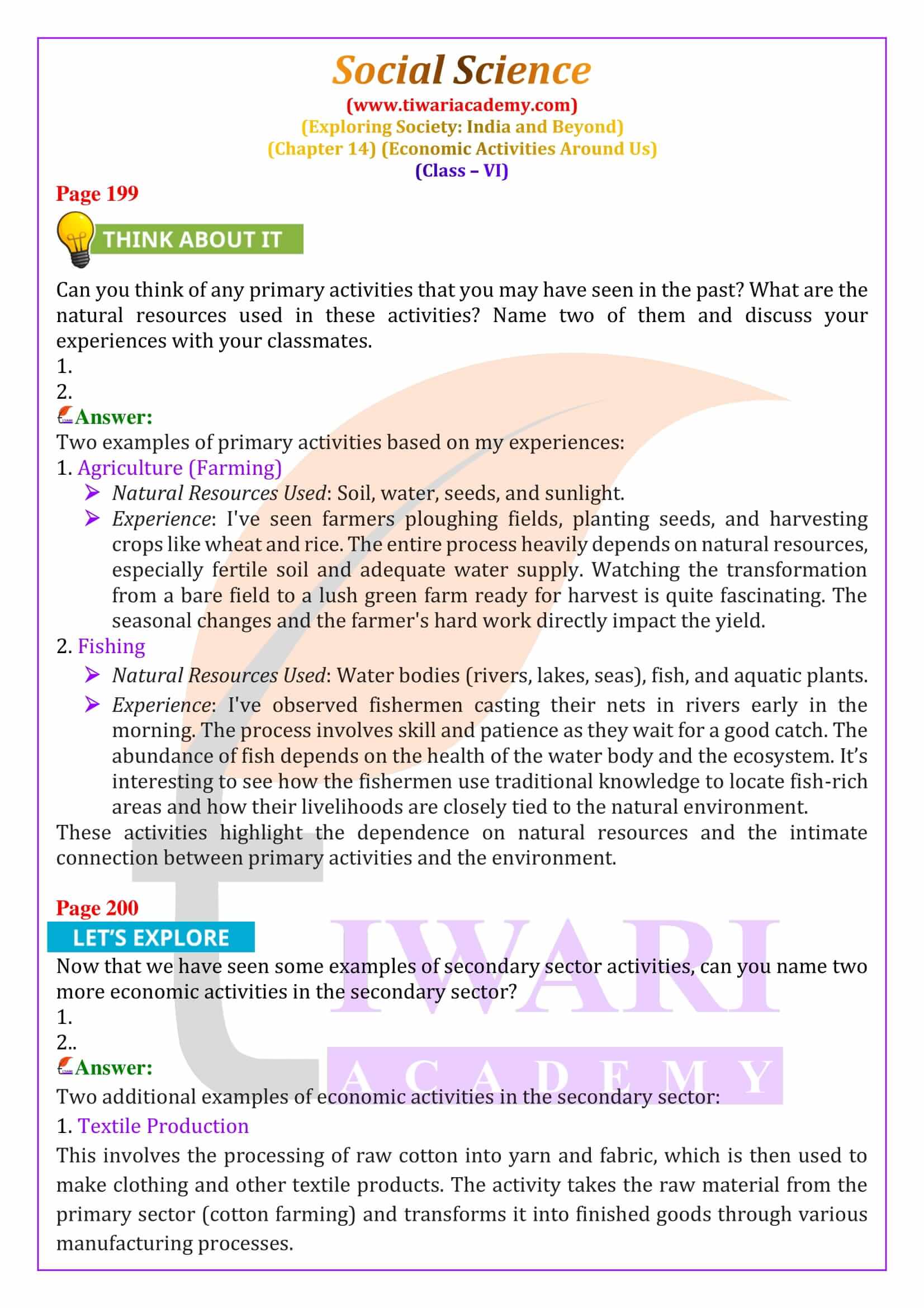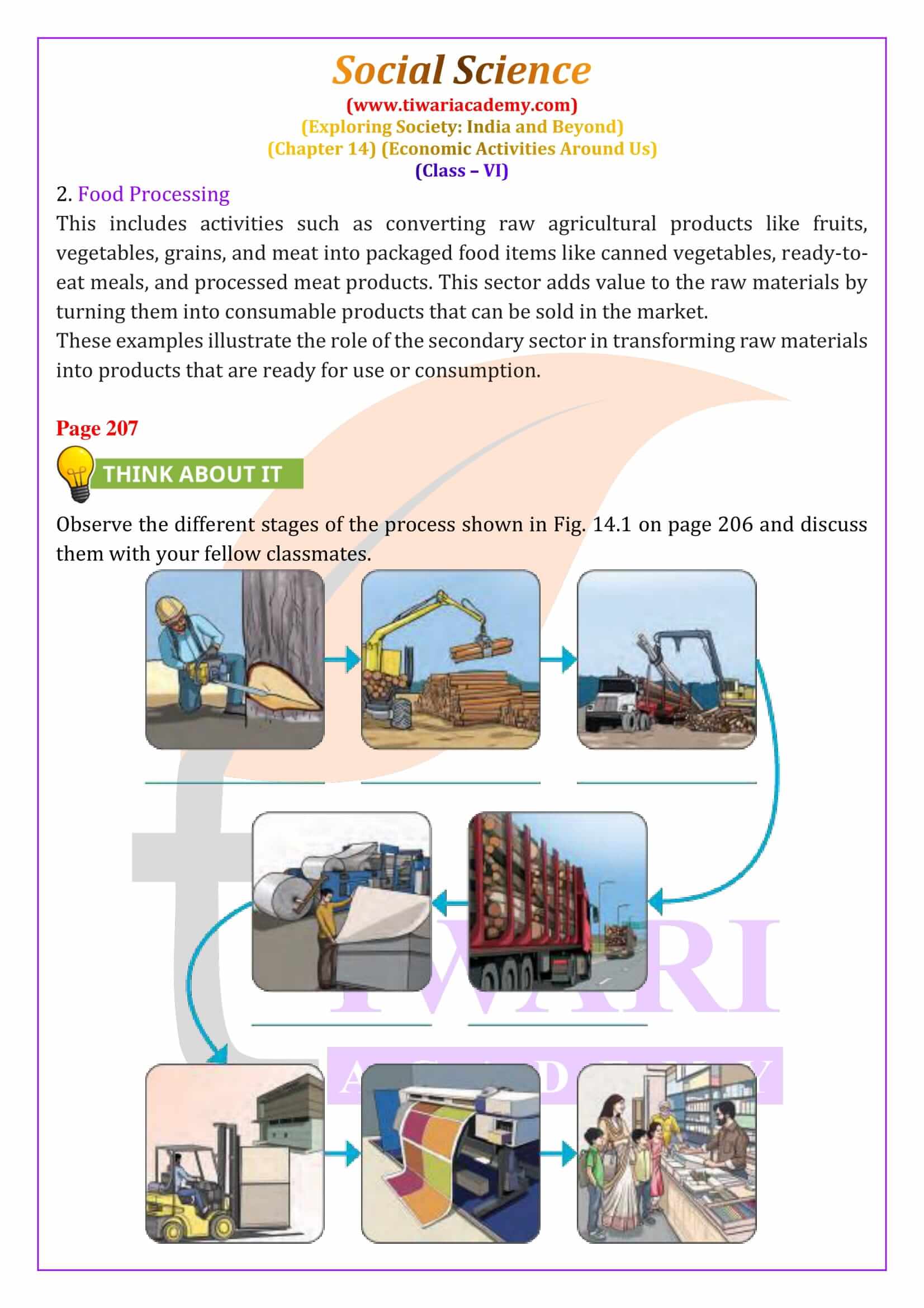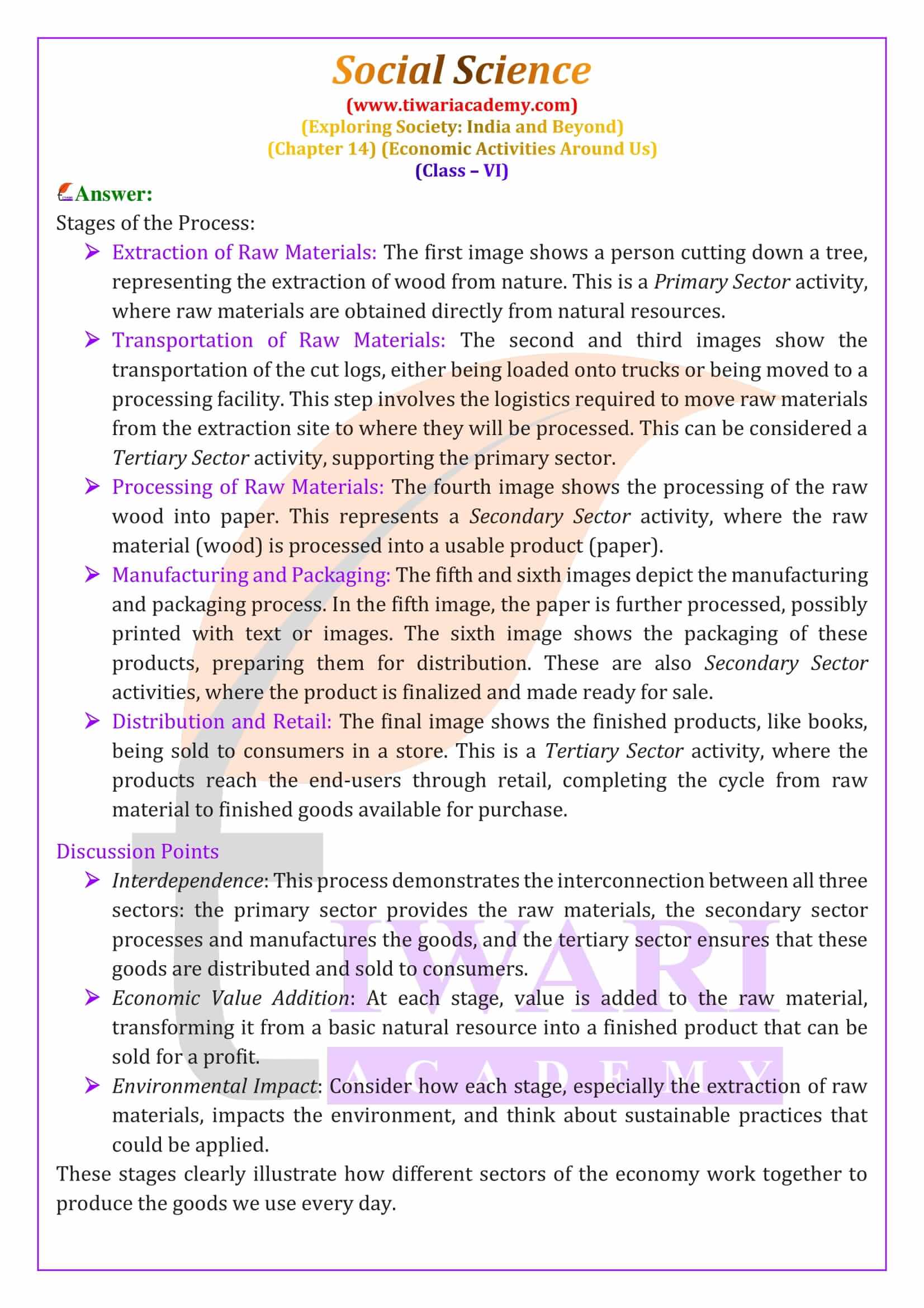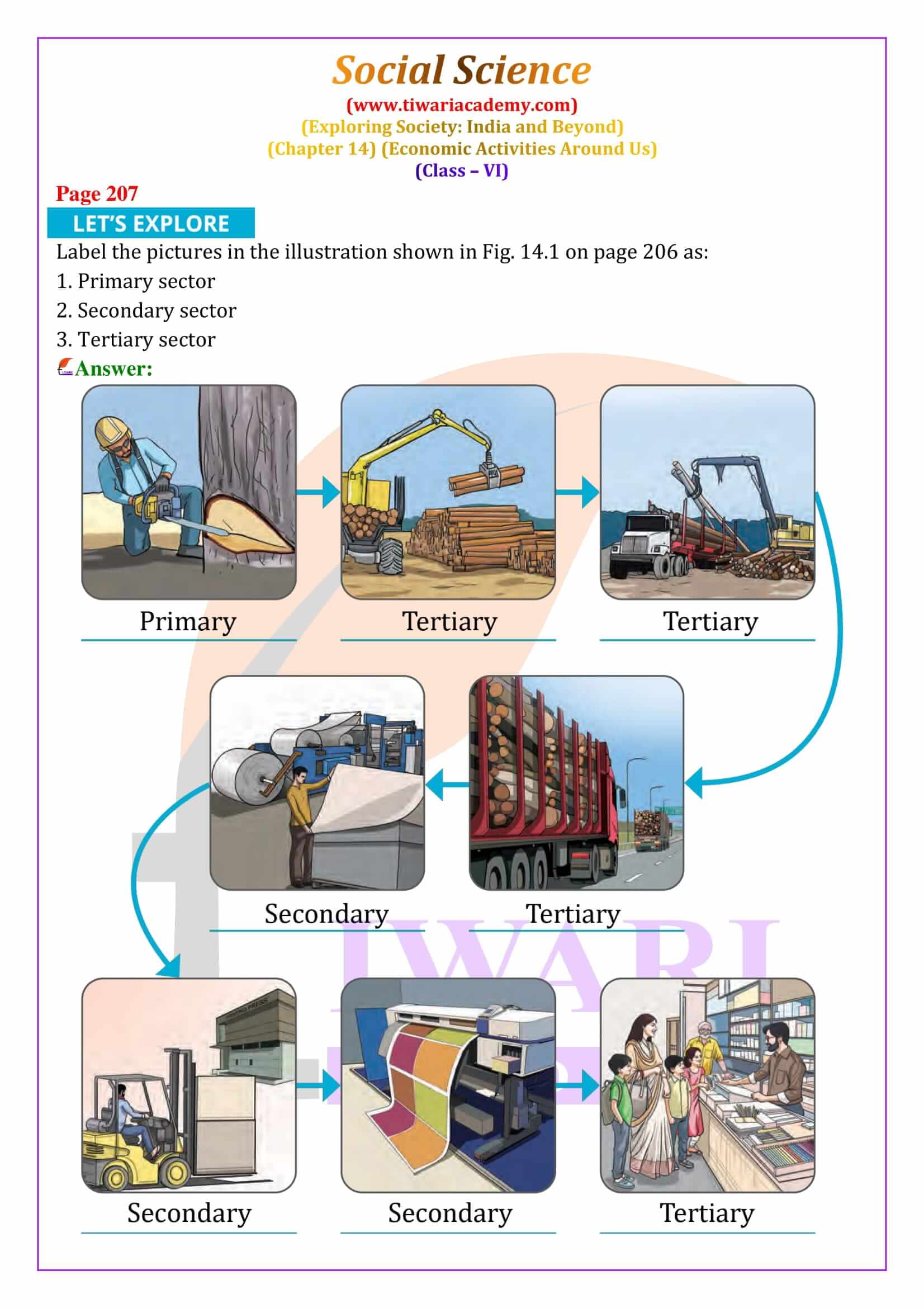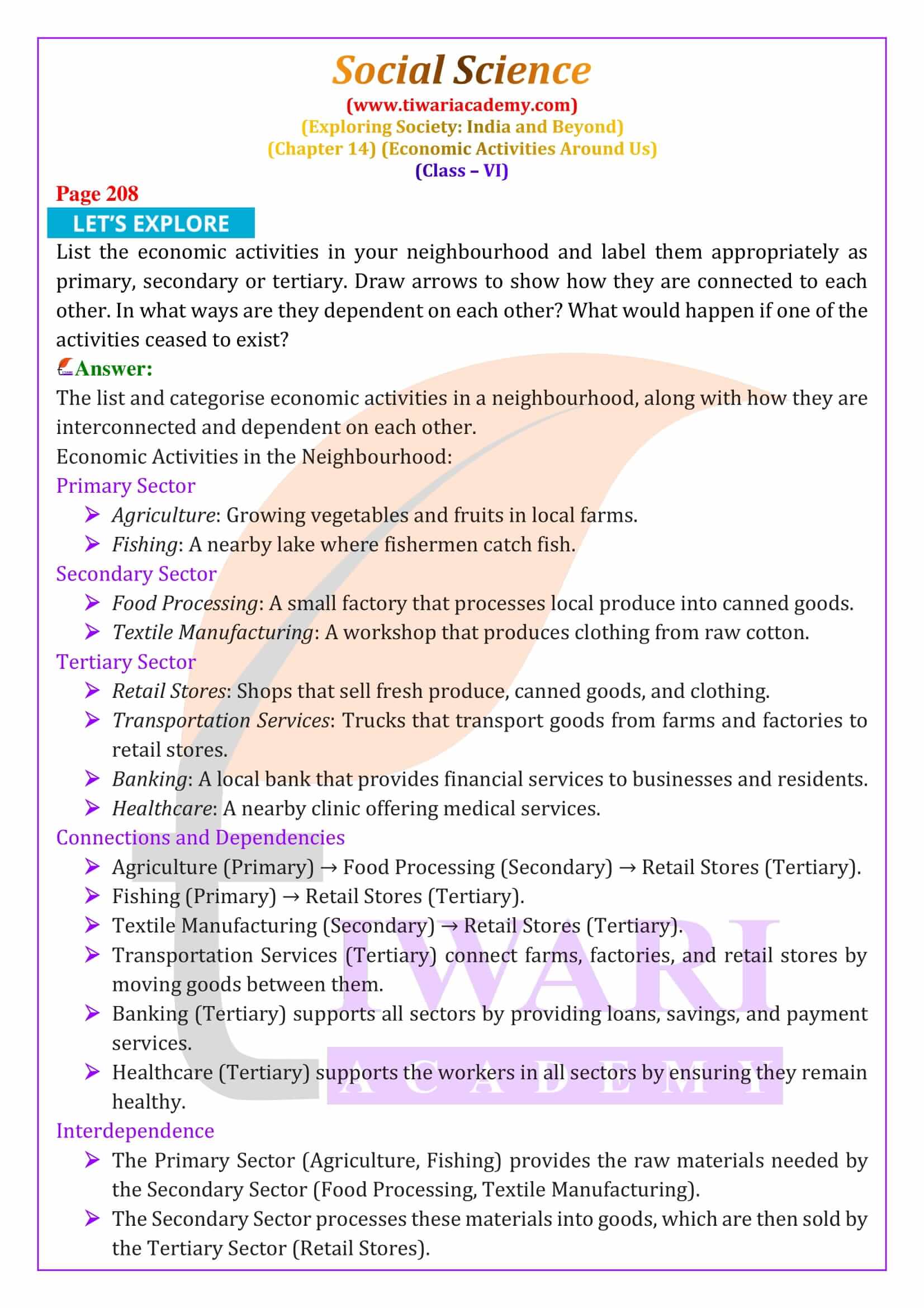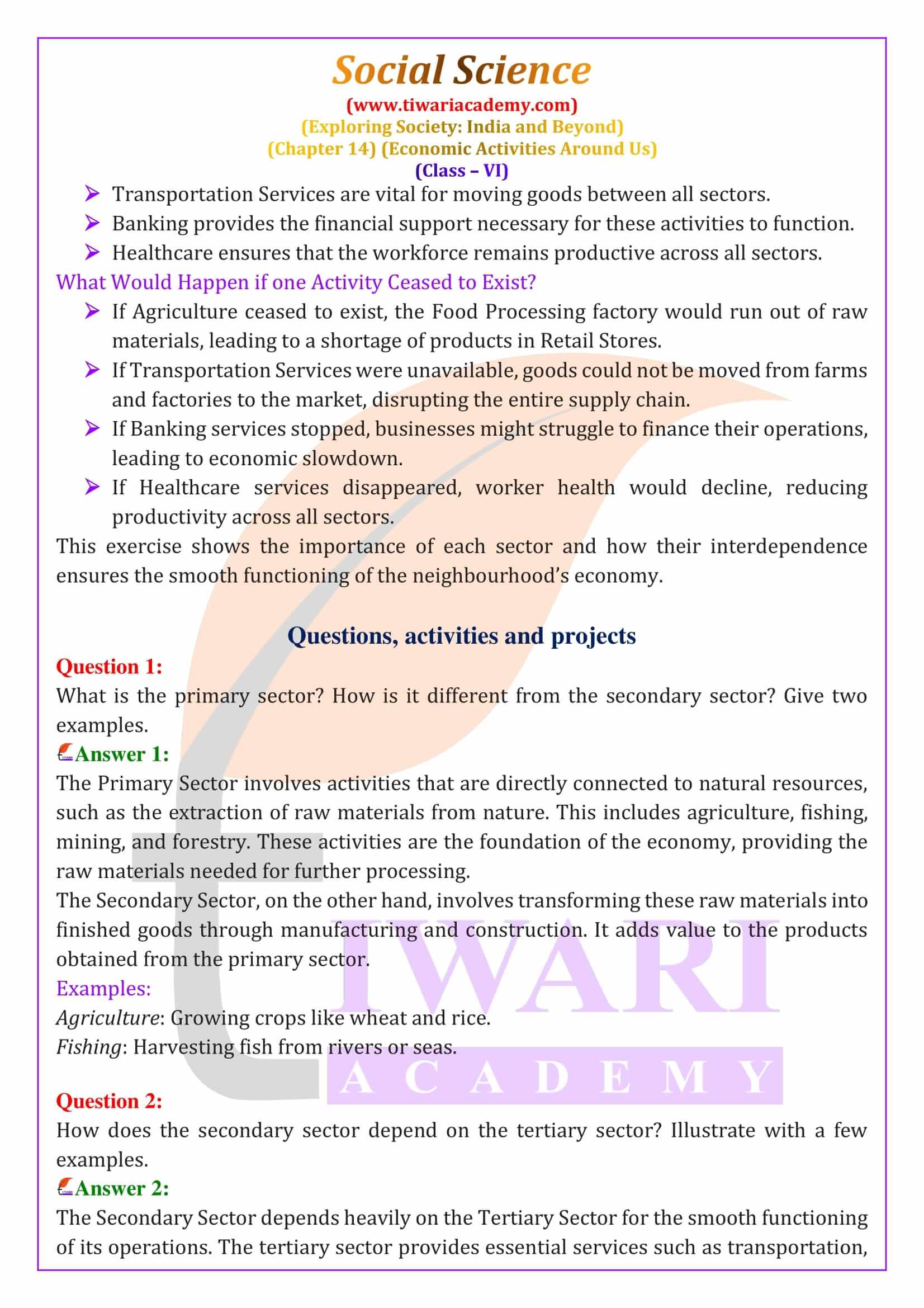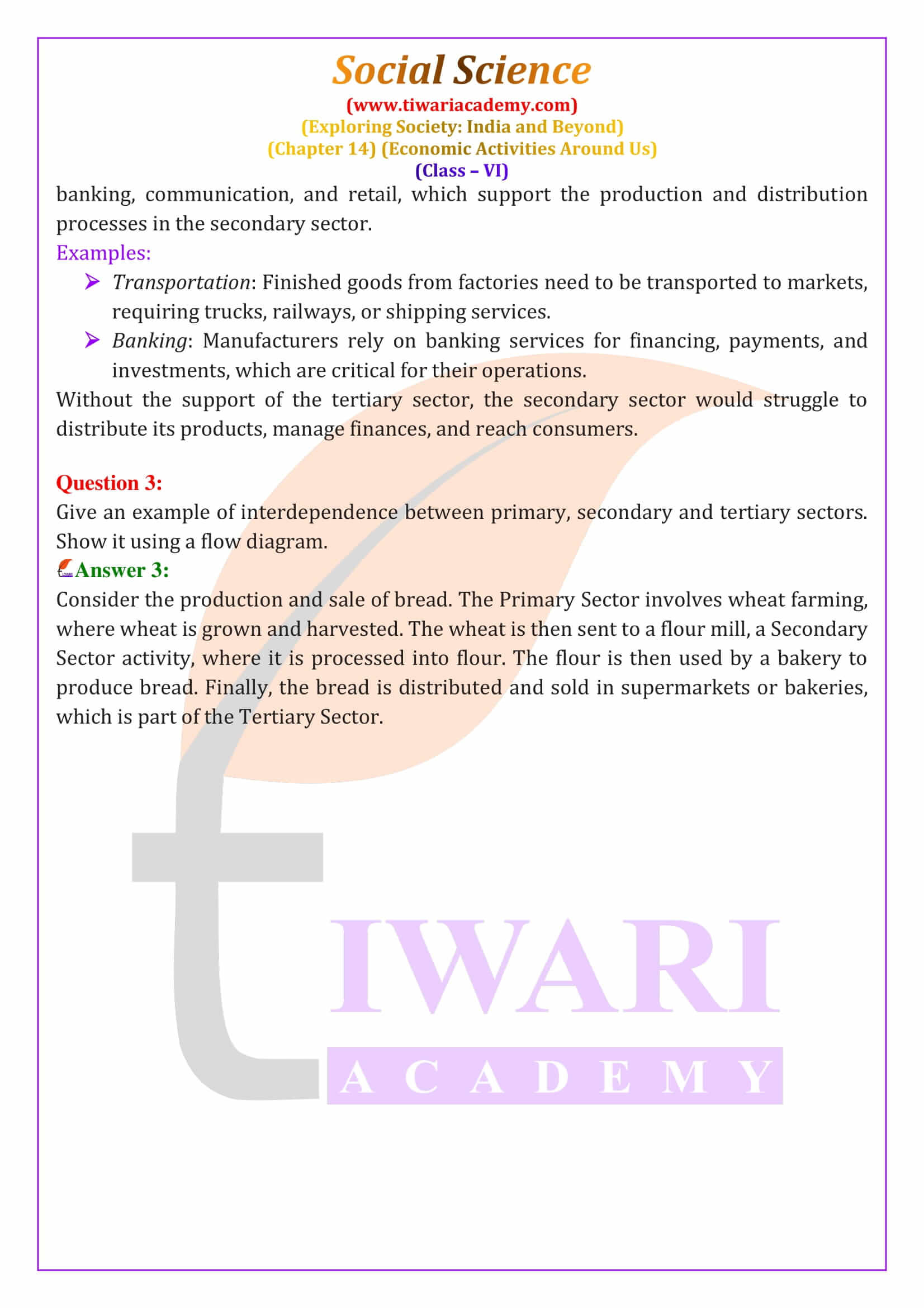NCERT Solutions for Class 6 Social Science Chapter 14 Economic Activities Around Us revised and updated for academic session 2025-26. Class 6 Social Science Chapter 14 Exploring Society – India and Beyond India Beyond Economics Section Question answers of exercises according to new education policy 2020.
Class 6 Social Science Chapter 14 Economic Activities Around Us Question Answers
Introduction to Economic Activities
Economic activities are actions that people do to earn money and create goods or services that have value. These activities are crucial for the prosperity of a society. Without them, communities would face difficulties in their growth and development. There are two main types of activities: economic and non-economic. Economic activities are those that generate monetary value, while non-economic activities do not. In this chapter, we explore how economic activities are classified into different sectors and how these sectors are interconnected to support the overall economy.
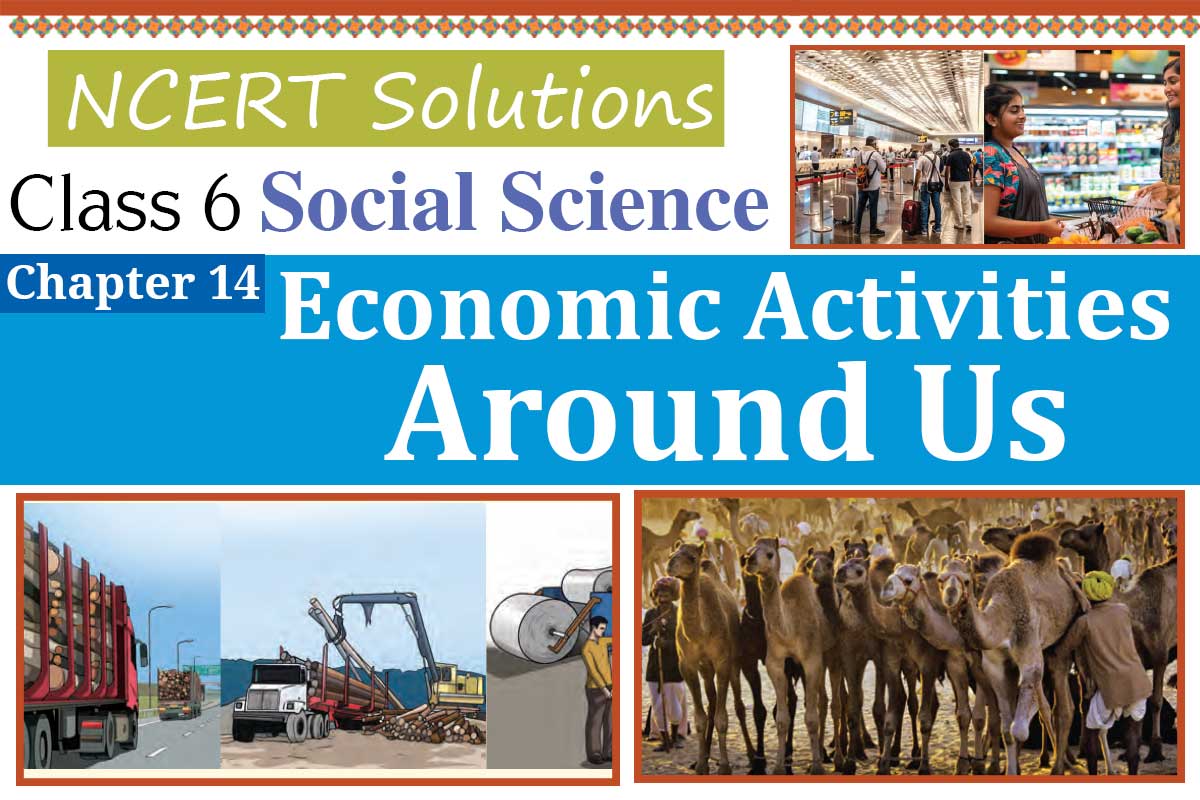
Classification of Economic Activities
Economic activities are grouped into three main sectors: primary, secondary, and tertiary. The primary sector includes activities where people directly use natural resources, such as farming, mining, and fishing. The secondary sector involves processing raw materials from the primary sector to produce goods, like turning wheat into flour or making clothes from cotton. The tertiary sector provides services that support the primary and secondary sectors, such as transportation, banking, and healthcare. These classifications help us understand how different activities function and their roles in the economy.
Primary Sector Activities
The primary sector includes activities that rely on nature to produce goods. For example, farming involves growing crops and raising livestock, while fishing involves catching fish from rivers or oceans. Mining is another primary activity where people extract minerals from the earth. These activities are essential because they provide the raw materials needed for the secondary sector to create products. Without the primary sector, there would be no materials to manufacture goods, making it a foundational part of the economy.
Secondary Sector Activities
In the secondary sector, people take raw materials from the primary sector and turn them into products that can be used or sold. For instance, factories may use wheat from farms to make bread or cotton to produce clothes. The secondary sector also includes construction, where buildings, roads, and other infrastructure are created. This sector plays a critical role in adding value to the raw materials by transforming them into items that people need and use every day, such as furniture, cars, and electronics.
Tertiary Sector Activities
The tertiary sector is often called the service sector because it involves providing services rather than producing goods. This includes a wide range of activities like transportation, where goods are moved from one place to another, or banking, which helps manage money. Other examples include education, healthcare, and retail. Services in the tertiary sector are vital because they support both the primary and secondary sectors by ensuring that products reach consumers and that people have access to necessary services.
Interdependence Among the Sectors
The three economic sectors—primary, secondary, and tertiary—are interconnected and rely on each other. For example, a farmer (primary sector) grows crops that are processed in a factory (secondary sector) and then transported and sold in markets (tertiary sector). Each sector depends on the others to function smoothly. This interdependence ensures that raw materials are transformed into finished goods and that these goods are made available to people through various services, creating a complete economic cycle.
Case Study: AMUL Dairy Cooperative
A great example of interdependence among the three sectors is the AMUL dairy cooperative in Gujarat. Farmers produce milk (primary sector) and sell it to the cooperative. The milk is then processed into various products like butter and cheese in factories (secondary sector). These products are distributed and sold across the country through a network of stores (tertiary sector). This cooperative model not only supports the farmers by giving them fair prices for their milk but also ensures that the products reach consumers efficiently, demonstrating how the three sectors work together to drive economic activity.

